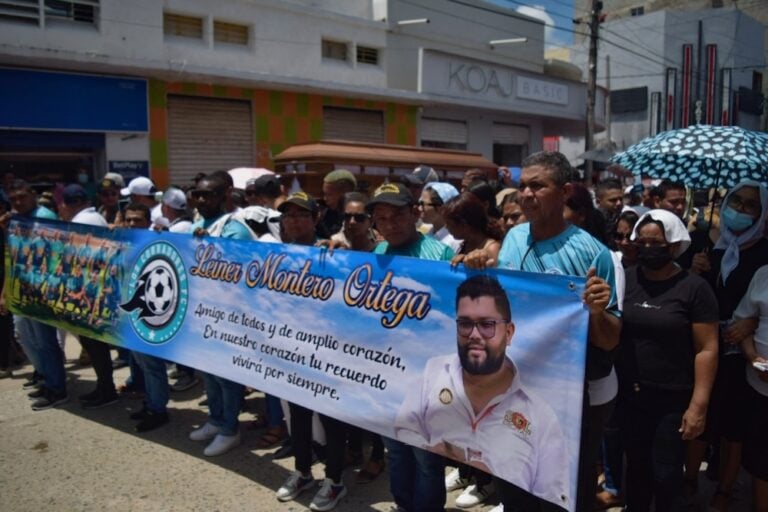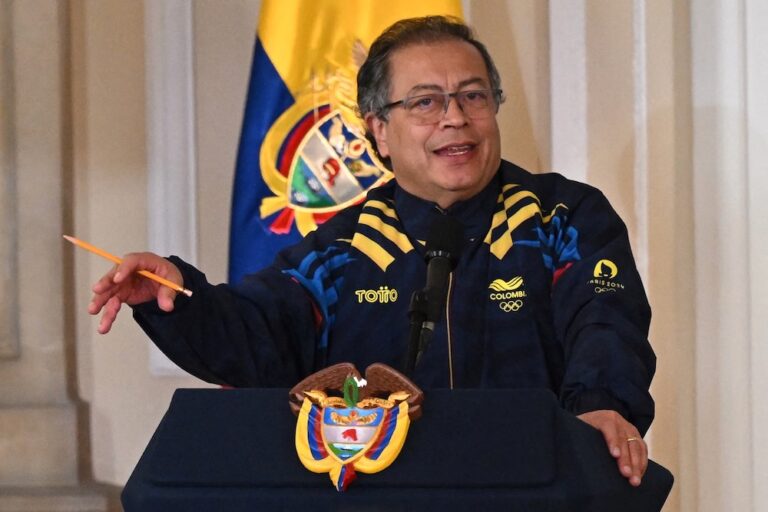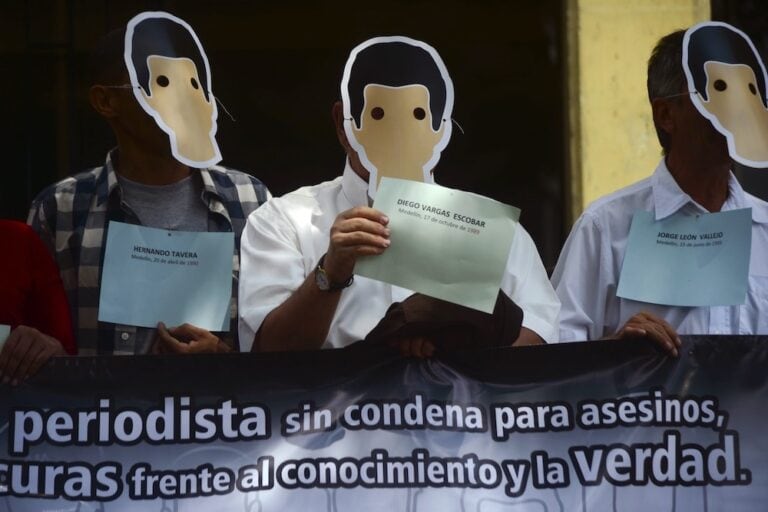(FLIP/IFEX) – On 14 October 2002, a group of journalists and camera operators from several media outlets was the target of gunfire while covering confrontations between police and urban militias in the Comuna 13 neighbourhood, west of Medellín. The bullets struck only a few metres from where the journalists were located. All of them escaped […]
(FLIP/IFEX) – On 14 October 2002, a group of journalists and camera operators from several media outlets was the target of gunfire while covering confrontations between police and urban militias in the Comuna 13 neighbourhood, west of Medellín. The bullets struck only a few metres from where the journalists were located. All of them escaped unhurt.
Claudia Garro of Caracol TV, Javier Arboleda of “El Colombiano”, Victor Vargas of Teleantioquia, Fernando Cifuentes of “Noticias Uno” and Carlos Franco of RCN TV, along with their camera operators, arrived at the San Javier Intermediary Unit, a health clinic located about four blocks from where the shots were being heard.
Around 10:00 a.m. (local time), the journalists moved one block up from the clinic. Hidden behind a wall, in a corner far from where the police were located, the journalists attempted to get some footage of the confrontations, which had begun at 7:00 a.m. after a group of militia members attacked a police patrol.
“The few passers-by, who had been caught by surprise on the street, and the small number of people using public transport looked on in shock at the journalists, as if to warn them of the danger in which they found themselves,” Arboleda reported in “El Colombiano”.
At that moment, shots began to be fired. “They were directed at us, since there were no police or other civilians around,” Franco told FLIP. The journalists withdrew immediately and arrived at the health clinic. The clinic attendant advised them to leave, since it was normal for the militias to come to the clinic when confrontations took place.
Comuna 13 has become a dangerous place for journalists. “This is the second time that journalists have been shot at,” said Garro. In its July report, FLIP noted that reporters from Teleantioquia and Hora 13 refused to cover events in the sector. Militias commonly try to force journalists to use a certain slant in their reports on law and order issues.
“We were outside the firing line, unarmed and far from whatever area could have been a target or from being in a position that could have been interpreted as participation in the combat,” said Arboleda.
According to FLIP, this type of attack against journalists, which seeks to prevent coverage of violent actions, is a clear violation of press freedom. Journalists have a duty to report on what happens, and all armed sides in the conflict must understand that journalism operates beyond it, acting only as a witness for the public.


